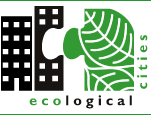The "Humane Metropolis" - Are We Ready?
By Neal Peirce
Washington Post Writer's Group
April 1, 2007
Cities were once celebrated as ports of trade, railway hubs, seats of smoke-belching industries. Then they became known as office and banking centers. In the late 20th century each big town had to have its own aquarium and stadiums. Recently there's been a new mantra -- cities as magnets for "young creatives" in arts and entrepreneurship.
Now, a new idea has surfaced. It's called "The Humane Metropolis." A book with that title, edited by Rutherford Platt, was recently published by the University of Massachusetts Press. A conference on the topic was held a week ago in Pittsburgh.
So what is a "humane metropolis"?
The key words seem to be green, healthy, sociable, civic, and inclusive.
A metropolis (i.e., metro region or citistate) is considered green if it fosters humans' connections to the natural world -- an idea Anne Whiston Spirn promoted in her seminal 1984 book "The Granite Garden." Spirn rejected the idea -- easily absorbed if one watches too many "concrete jungle" films, or even televised nature documentaries -- that the natural world begins beyond the urban fringe. "Nature in the city," she wrote, "must be cultivated, like a garden, rather than ignored or subdued."
That means renewed attention to welcoming urban parks, from entire "green necklace" systems within metro areas to the emerald-green sanctuary of small vest pocket parks. Community gardens, green roofs, street trees and planted medians all count -- and today more than ever as antidotes to the "urban heat island" phenomenon and the spread of global warming-inducing greenhouse gases.
Recovery of barren industrial "brownfields" is one companion strategy; another is creating ecological habitats on such bleak sites as sanitary landfills. There's even an experiment now to nurture biodiversity atop a literal landscape of death -- the Fresh Kills landfill on New York's Staten Island, where the World Trade Center debris was deposited.
Closely allied are "green blue" strategies -- handling urban water in more sensitive, planet-protecting ways, by "daylighting" streams once enclosed in concrete pipes and by filtering stormwater more slowly through swales and other forms of landscaping that avoid big engineering solutions in favor of nature's more modest but ecologically sound ways.
Peoples' health is the next key to a humane metropolis: to reduce asthma-inducing auto, truck and industrial pollution, and now to attack the obesity epidemic impacting American society. Public health researcher Anne Lusk calls for linear urban parks to encourage not just walking and biking but such energetic activities as running, skating and rock climbing (giving adults a chance to socialize and witness youth' athletic prowess). She also suggests "health enterprise zones" to encourage gymns, stores offering fresh groceries and other health-oriented businesses in rundown areas.
The humane metropolis advocates would have modern cities rethought -- from street plans to entire neighborhood layouts -- to be more sociable, civic and inclusive.
Gated communities, writes Edward Blakely (now development director in New Orleans) are a prime enemy of social and shared urban experience. Set off by walls or fences, controlled by gates and sometimes guards, these areas have expanded rapidly in recent decades. Asks Blakely: "If there is little contact, then where is the social contract? If there is no social contract, then who will support the 'public' needs of society, affordable housing, parks, health care and education?"
Sheer urban sprawl, with the long and often grueling commutes it requires, creates some of the same separation and potential polarization -- racial, economic and social -- across America's fast-growing metro regions. And as Deborah and Frank Popper write, the result of the region-wide population explosion of the last half century has been to make more and more of America's gathering places privately owned, from regional shopping malls to conference hotels to industrial parks, "each designed to be reliably predictable and controllable."
The "humane metropolis" advocates, bent on shared streets and spaces, have no single solution. Their idea is simply to protect and create all possible natural areas -- parks, greenways, forest tracts -- fostering a shared sense of "ecological stewardship." They're strongly for promotion of urban gardening and farm markets. They support efforts toward environmental justice, so that low-income areas are not burdened with undue, damaging pollution.
And of course they aim to create welcoming, green places in cities, nature within urban places, bringing people together to rub shoulders, recreate, have fun - and, with luck, even get to know each other. Adding, they hope, social justice; as Ford Foundation official Carl Anthony writes, "Issues of race and poverty, social and environmental justice, must be central to the way we envision a truly humane metropolis, bringing together people and nature in the 21st century."
Rutherford Platt sums it up: "In the decades ahead, the emphasis must shift from limiting 'urban sprawl' to making the resulting metropolitan fabric as green, habitable, and humane as possible."
|

